Tuesday, March 20th, 2018 by Julian Karsunky
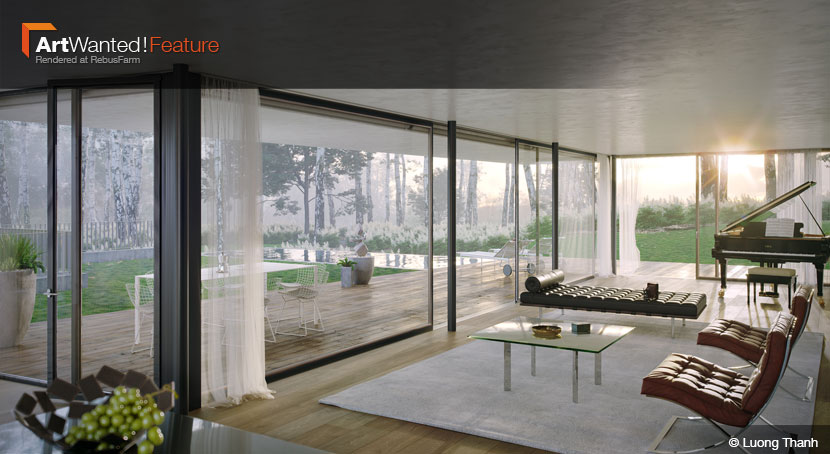
As a commercial service, architectural visualization usually leaves only limited room for artistic expression. Luong Thanh and his coworkers at Vietnamese studio NatrangDesign understand how to fully use the space available and produce astonishing designs that simultaneously defy and adhere to genre conventions. A 3D artist in an ever-fleeting world, Luong aims to create digital imagery that leave a lasting impression within mere seconds, never losing track of one of the most basic design principles: the human element.
Join us on a leisurely stroll through wide open spaces and homely yet elegant interiors as we explore how Luong Thanh captures and conveys atmosphere and emotion.
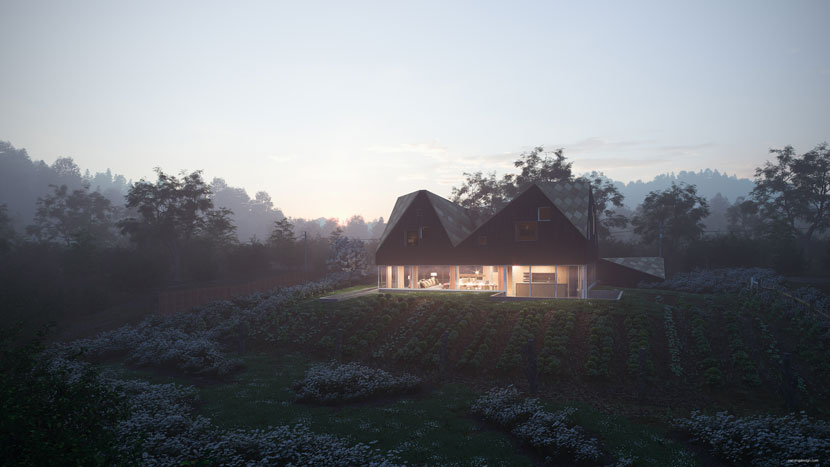 This image showcases the talent of Luong and his team by cleverly blending exterior and interior design.
This image showcases the talent of Luong and his team by cleverly blending exterior and interior design.
Before we dive deeper into Luong Thanh’s artistic vision and visit his high-res recreation of reality, we have to take a brief analogue detour to Đà Nẵng, Vietnam. Here, on the coast of the South Chinese Sea, Luong operates Natrang Design, his own studio. Founded in 2011, the company currently employs six CGI artists and provides architectural images and products to a global market, including long lasting business relations with clients in Switzerland, Germany and North America.
Luong’s own journey as a 3D artist began during his third year of studying interior design, when he first touched upon software such as 3ds Max, Mudbox and the now defunct renderer Mental Ray to complete university assignments. Having thus learned the basics, experiencing the work from the likes of Pixar, Blur Studio and Alex Roman in a new light quickly left him fiending for more. To quench his thirst for a more advanced understanding of 3D software, Luong scoured the internet for more learning material. Amidst the plethora of resources available online, he was particularly impressed by the online courses from Viscorbel and Gnomon Workshop, which helped him to “further develop both fundamental and more complex skill sets” respectively.
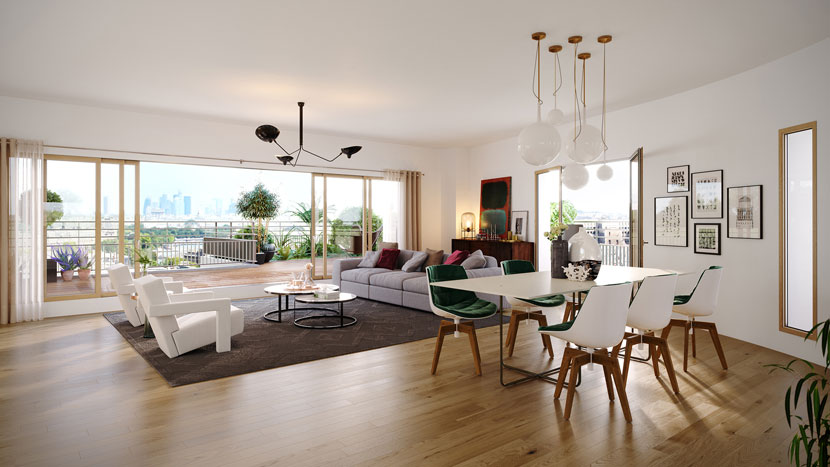 The huge windows in this living room are great light sources, at the same time they make the image lively as they offer a glimpse of the outside world.
The huge windows in this living room are great light sources, at the same time they make the image lively as they offer a glimpse of the outside world.
For CGI, as in almost every aspect of life, firmly grasping the basics is the way to true mastery. “Once you’re comfortable with the essential techniques,” Luong says, “the fastest way to get better is to simply apply that knowledge and practice.” Translated to interior design, his advice is to start out small: “Taking a minimalist approach can be a very effective method to improve your skill, not only from a technical standpoint, but as a designer in general. Create a basic interior with little furniture, such as a small room with nothing but concrete walls and a set of chairs on wooden floor. Having fewer objects in your scene forces you to pay much more attention to details.”
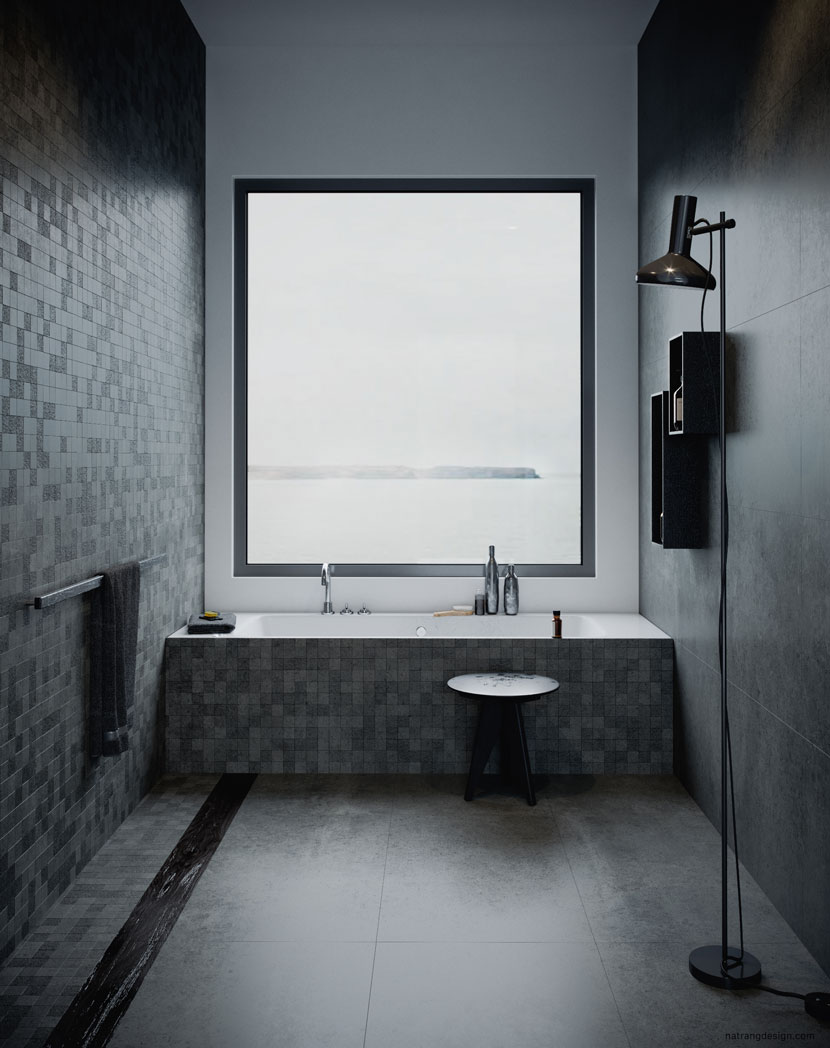 This sparely decorated Bathroom almost looks like a still life.
This sparely decorated Bathroom almost looks like a still life.
The interiors produced at Natrang Design are text-book examples of Luong’s design philosophy in terms of composition, lighting and detail. Every scene is carefully arranged and put into perspective by huge window facades, a recurring element in Luong’s work. Besides their obvious purpose as light sources, these windows also function as openings into a vivid outside world, a sight rarely seen in interior design.
The exterior scenes deviate even further from archviz conventions: The buildings are solitary landmarks framed by vast, open and often moody landscapes. Lush meadows, lonely snow fields and desolate woodlands – these delicately crafted environments are more than mere backdrops. Not an afterthought but an equally important part of a whole composition, nature is a harmonic counterpart to the man-made structures. Viewed from afar, the houses in Luong’s work seem that much more welcoming, a visual promise of shelter and community, ready to fill the void left by its isolatory surroundings.
“The leading question that drives all of my designs is: ‘What feeling do I want to convey with this piece?’”, Luong tells us. “Whatever that feeling is, it should be immediately obvious within seconds upon first viewing!”
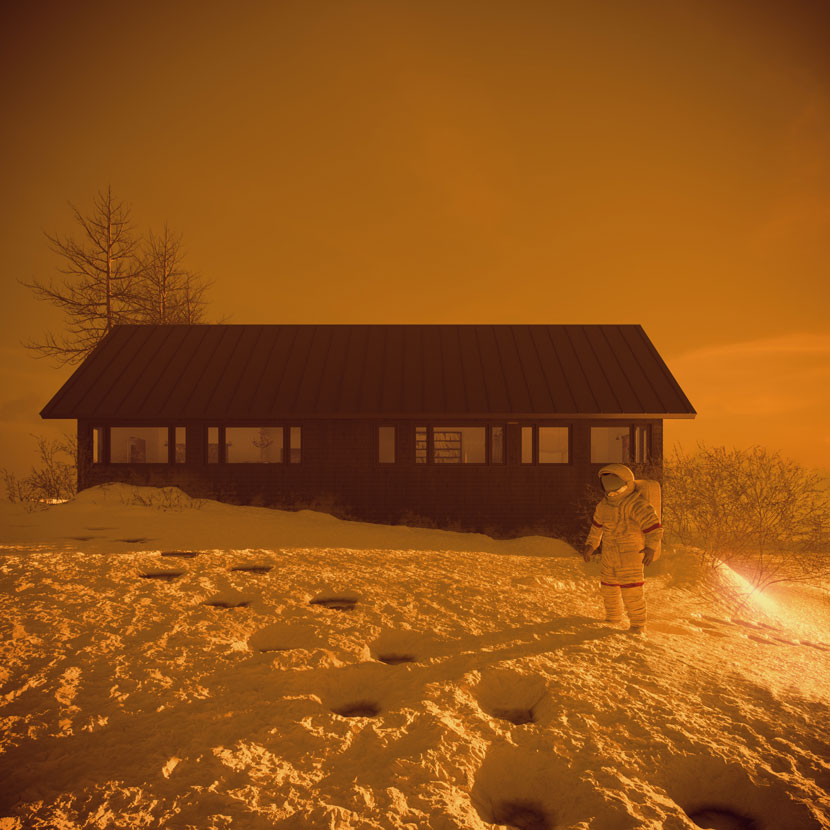 Highly evocative and moody environments, such as this otherworldly cottage, are integral parts of Luong’s designs.
Highly evocative and moody environments, such as this otherworldly cottage, are integral parts of Luong’s designs.
When asked what his usual pipeline consists of, Luong tells us that his team mostly works with 3ds Max and AutoCAD. “For rendering, we went from Mental Ray to V-Ray to Corona, which is what we mostly use nowadays. We also work with a wide variety of plugins; understanding and utilizing plugins offer a lot more creative freedom overall!”
Speaking of software, Luong Thanh has first used the RebusFarm three years ago. “After just one short introductory session, I was able to render six images with 8000 pixels in no time.”, he recalls his first experience with our online render service. “Since then, things have gotten even easier! By outsourcing the entire render process, artists everywhere have more free time to spend with family and friends.”
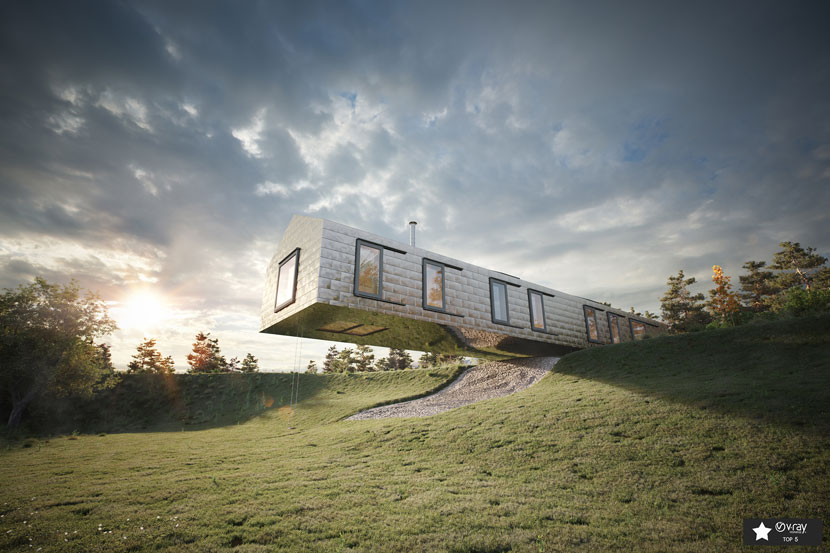 Just like this ‘Balancing Barn’ Luong maintains equilibrium between commercial and artistic expression.
Just like this ‘Balancing Barn’ Luong maintains equilibrium between commercial and artistic expression.
For 3D artists, the commercial side of CGI often means walking the fine line between marketability and artistic integrity. Luong and his team have found a way to walk this tightrope gracefully, both arms outstretched, striking a perfect balance. “Almost every single project is for the sake of self-discovery”, Luong sums up his philosophy and coming from him, it doesn’t sound pretentious in the slightest.
Keep up with Luong Thanh and Natrang Design here:
How to join ArtWanted!
You want to get featured in our ArtWanted! campaign and win 50 RenderPoints on top? Submit your work, rendered at RebusFarm, to Este endereço de email está protegido contra piratas. Necessita ativar o JavaScript para o visualizar.! Visit our Art Wanted! page for more information.
